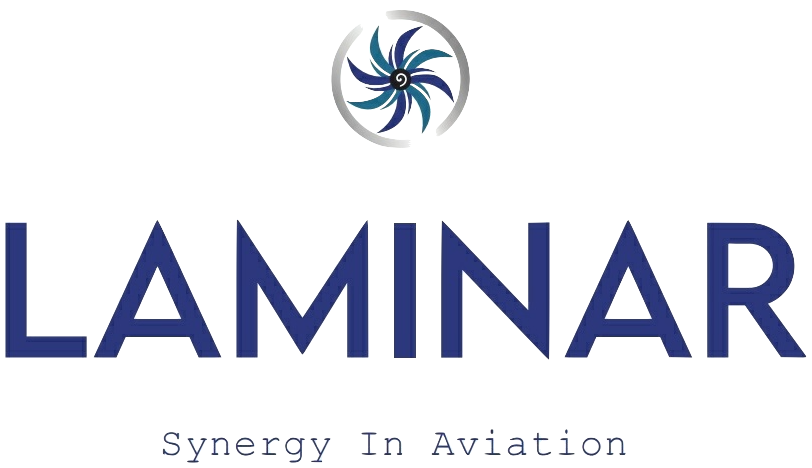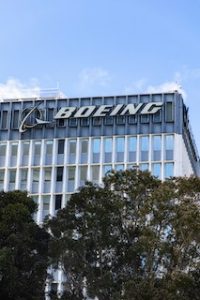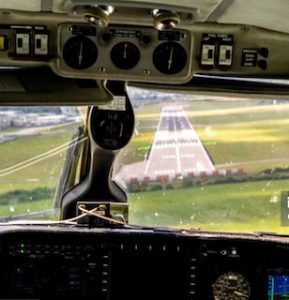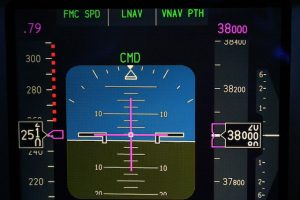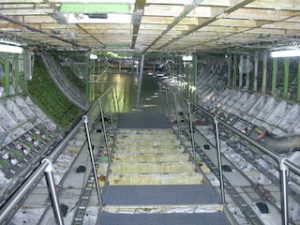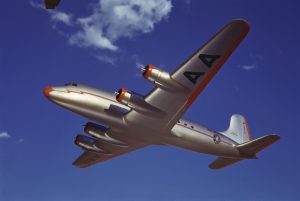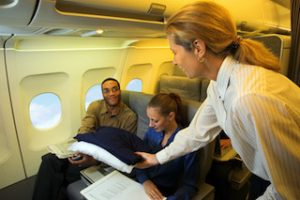Comprehensive Guide to Airline-Specific Procedures in Airline Pilot Standards (APS) Courses
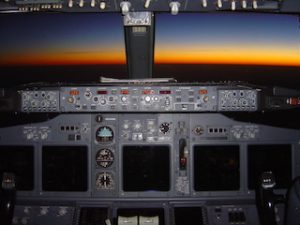 In the world of aviation, airline-specific procedures form the backbone of safe, efficient, and standardized operations. These procedures, taught meticulously in Airline Pilot Standards (APS) courses, ensure that pilots are not only skilled in flying but also adept at handling the unique requirements of different airlines. This article delves into the various airline-specific procedures covered in APS training, their importance, and how they contribute to the overall safety and efficiency of airline operations.
In the world of aviation, airline-specific procedures form the backbone of safe, efficient, and standardized operations. These procedures, taught meticulously in Airline Pilot Standards (APS) courses, ensure that pilots are not only skilled in flying but also adept at handling the unique requirements of different airlines. This article delves into the various airline-specific procedures covered in APS training, their importance, and how they contribute to the overall safety and efficiency of airline operations.
Understanding airline-specific procedures
Airline-specific procedures are tailored guidelines and protocols developed by individual airlines to address their unique operational needs. These procedures encompass a wide range of activities, from pre-flight preparations to in-flight operations and post-flight protocols. APS courses integrate these procedures into their curriculum to provide pilots with the comprehensive knowledge required to adhere to the specific standards of the airlines they serve.
1) Pre-flight preparations
Pre-flight preparations are crucial for ensuring that a flight is conducted safely and efficiently. APS courses emphasise the importance of thorough pre-flight checks and briefings, which include several key components:
Flight planning
Flight planning is a critical aspect of pre-flight preparations. Pilots are taught to meticulously plan each flight segment, considering factors such as weather conditions, fuel requirements, alternate airports, and air traffic control (ATC) restrictions. Airline-specific procedures may also dictate preferred routes, altitude selections, and contingency plans tailored to the airline’s operational network.
Aircraft inspection
A comprehensive aircraft inspection is essential to ensure that the aircraft is airworthy and all systems are functioning correctly. Pilots learn to follow airline-specific checklists, which outline the steps for inspecting critical components such as engines, control surfaces, landing gear, and avionics systems. This inspection also includes verifying that all necessary documentation and equipment are on board.
Crew briefings
Effective communication and coordination among the flight crew are vital for safe operations. APS courses teach pilots to conduct detailed crew briefings, covering topics such as the flight plan, weather conditions, potential hazards, and emergency procedures. These briefings are customised according to airline-specific protocols to ensure that all crew members are on the same page.
2) In-flight operations
In-flight operations encompass a wide range of activities, from takeoff to landing, and require adherence to precise procedures to maintain safety and efficiency. APS courses cover these procedures extensively, focusing on several critical aspects:
Standard Operating Procedures (SOPs)
Standard Operating Procedures (SOPs) are the backbone of in-flight operations. They provide a structured approach to handling various phases of flight, including takeoff, climb, cruise, descent, and landing. APS courses train pilots to follow airline-specific SOPs meticulously, ensuring consistency and reducing the risk of errors. These SOPs cover everything from power settings and speed targets to communication protocols and emergency actions.
Communication protocols
Effective communication with ATC and among the flight crew is essential for safe operations. APS courses teach pilots the specific communication protocols used by their airline, including phraseology, call sign usage, and standard responses. Clear and concise communication helps prevent misunderstandings and ensures that all parties are aware of the aircraft’s intentions and status.
Emergency procedures
Handling emergencies requires quick thinking and adherence to established protocols. APS courses include comprehensive training on airline-specific emergency procedures, covering scenarios such as engine failures, cabin depressurization, fire, and medical emergencies. Pilots learn to follow these procedures step-by-step, ensuring that they can respond effectively and mitigate risks.
3) Post-flight protocols
Post-flight protocols are equally important in ensuring that flights are concluded safely and that any issues encountered during the flight are addressed. APS courses cover several key post-flight procedures:
Aircraft shutdown
Properly shutting down the aircraft is crucial to ensure its safety and readiness for the next flight. Pilots learn to follow airline-specific checklists for shutting down engines, securing systems, and completing post-flight inspections. These procedures help identify any maintenance needs and ensure that the aircraft is properly prepared for its next operation.
Debriefings
Post-flight debriefings provide an opportunity for the flight crew to review the flight and discuss any issues or lessons learned. APS courses emphasize the importance of conducting thorough debriefings, which can include discussing weather challenges, ATC interactions, and any deviations from standard procedures. This feedback loop helps improve future operations and ensures continuous learning.
Reporting and documentation
Accurate reporting and documentation are essential for maintaining a record of the flight and any issues encountered. APS courses teach pilots to complete airline-specific forms and reports, documenting details such as flight times, fuel usage, maintenance discrepancies, and any incidents. This documentation is crucial for regulatory compliance and helps the airline track performance and identify areas for improvement.
Role of technology in airline-specific procedures
Advancements in technology have significantly impacted airline-specific procedures, enhancing both safety and efficiency. APS courses integrate training on the latest technological tools and systems used by airlines, ensuring that pilots are proficient in their use.
Electronic Flight Bags (EFBs)
Electronic Flight Bags (EFBs) have revolutionized the way pilots access and manage information. APS courses teach pilots to use EFBs, which provide digital access to charts, manuals, checklists, and other essential documents. Airline-specific procedures may dictate the use of EFBs for tasks such as flight planning, performance calculations, and real-time weather updates.
Flight Management Systems (FMS)
Flight Management Systems (FMS) are critical for automating various aspects of flight operations. APS courses cover the use of FMS, which help pilots manage navigation, performance, and fuel efficiency. Pilots learn to program and monitor the FMS according to airline-specific procedures, ensuring that the aircraft follows the planned route and adheres to performance parameters.
Automated Dependent Surveillance-Broadcast (ADS-B)
ADS-B technology enhances situational awareness by providing real-time position information to both pilots and ATC. APS courses include training on the use of ADS-B, which is integrated into many airlines’ procedures for collision avoidance, traffic separation, and situational awareness. This technology allows pilots to have a clearer picture of the surrounding air traffic and make informed decisions.
Importance of adherence to airline-specific procedures
Adherence to airline-specific procedures is crucial for maintaining safety, efficiency, and regulatory compliance. These procedures are designed to address the unique operational needs of each airline, considering factors such as fleet composition, route structure, and regional regulations. APS courses emphasise the importance of following these procedures for several reasons:
Safety
Safety is the foremost priority in aviation. Airline-specific procedures are developed to mitigate risks and ensure safe operations. By adhering to these procedures, pilots can minimise the potential for accidents and incidents, protecting passengers, crew, and aircraft.
Efficiency
Efficiency in operations helps airlines reduce costs and improve service quality. Airline-specific procedures are tailored to optimize flight operations, including fuel management, time management, and resource allocation. Pilots trained in these procedures can contribute to more efficient operations, benefiting both the airline and its customers.
Regulatory compliance
Aviation is a highly regulated industry, with strict requirements imposed by national and international authorities. Airline-specific procedures ensure compliance with these regulations, covering aspects such as flight operations, maintenance, and reporting. APS courses include training on these regulatory requirements, ensuring that pilots understand their obligations and adhere to the relevant standards.
Continuous improvement and training
The aviation industry is dynamic, with continuous advancements in technology, regulations, and best practices. Airline-specific procedures must evolve to keep pace with these changes, and APS courses play a vital role in this ongoing process.
Recurrent training
Recurrent training is essential for keeping pilots updated on the latest procedures and practices. APS courses include recurrent training modules, ensuring that pilots remain proficient and knowledgeable about current standards. This training may cover new technologies, revised regulations, and updated procedures.
Feedback and evaluation
Continuous improvement is a key principle in aviation. APS courses emphasize the importance of feedback and evaluation, encouraging pilots to participate in safety reporting systems and provide input on procedures. This feedback helps airlines identify areas for improvement and refine their procedures to enhance safety and efficiency.
Conclusion
Airline-specific procedures are a critical component of safe and efficient flight operations. Through comprehensive training in APS courses, pilots gain the knowledge and skills needed to adhere to these procedures, ensuring consistency, safety, and regulatory compliance. From pre-flight preparations to in-flight operations and post-flight protocols, these procedures encompass every aspect of a pilot’s responsibilities. As technology advances and the aviation industry evolves, continuous training and adherence to airline-specific procedures remain essential for maintaining the highest standards of safety and efficiency in aviation.
